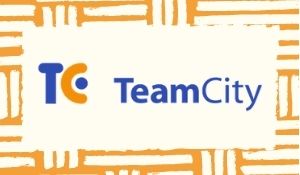
What Is Teamcity?
TeamCity from JetBrains is a continuous integration tool and a distributed Java-based build management system that can be highly beneficial to teams using an agile development approach. It is used to build and deploy distinct projects that are established by Jet brains, and it is licensed under a proprietary license. Build agent of TeamCity is a piece of software that listens for instructions from the TeamCity server and then begins the actual building process. This TeamCity building agent is separately installed from the TeamCity server.

With TeamCity we can:
- Run parallel builds concurrently on different platforms and environments
- Optimize the code integration cycle and be sure you never get broken code in the repository
- Review on-the-fly test outcomes reporting with intelligent tests reordering
- Run code coverage and duplicates finder for Java and .NET
- Customize data on build duration, success rate, code quality, and customized metrics
Supported Platforms and Environments of TeamCity:
When you do constant union with TeamCity then you have a range of unique frameworks, IDEs, platforms and different tools that will assist you build your software project in a better environment.
TeamCity supports runners for Java, .NET and Ruby of course and you can use order line runners for different languages too. Different tools for checking, code inclusion, code examination, issue following are an important piece of the TeamCity collection and TeamCity itself can be integrated with a couple of IDEs too. A portion of the highlights and tools stop as a count of courses packaged with TeamCity and others can be brought as modules. JetBrains have their very own arrangement of modules, however, there are likewise some outsider modules accessible.

Advantages of Using TeamCity:
- TeamCity observes multiple branches with various build methods for each branch
- TeamCity is a useful system test runner including test history and identification of problematic or flaky tests
- TeamCity checks status across many projects
- Tool Integration: easy setup, several examples that are existing, great documentation
- TeamCity has a greater ability for troubleshooting and investigation whenever a new code fails
- Very simple to use, updates and upgrades are also easily understandable
Latest Advancements and Its Opportunities:
TeamCity takes advantage of cloud computing by dynamically scaling out its build agents farm on Amazon EC2, Microsoft Azure, VMware vSphere, or in your own Kubernetes cluster. TeamCity is a CI/CD server whose key elements are an effective toolset and universality. With this Cloud version, you can address the user demand in the full-featured CI/CD solution and make it handy to you in a couple of minutes, with no need to maintain a server on-premise.
If you are new to TeamCity, the Cloud Beta is a great beginning as it automatically resolves the task of installing and configuring the server. After your cloud TeamCity server is ready, you can proceed to Configure and run your first build guide. When you register a TeamCity Cloud account, your own TeamCity server is automatically created in Amazon Web Services. The server operates on the newest version of TeamCity and currently provides Windows and Linux cloud agents out of the box self-hosted agents for Windows, Linux, and macOS are also supported.
TeamCity is a very popular, mature and feature-rich toolset which enables us to build very sophisticated automated build pipelines very quickly. TeamCity has a market share of about 2.0%.Gologica’s trainers have relevant experience in implementing real-time solutions on different queries related to different topics. You will work on real world projects wherein you can apply your knowledge and skills of various aspects and components that you acquired through our online training by making you perfectly industry-ready.

